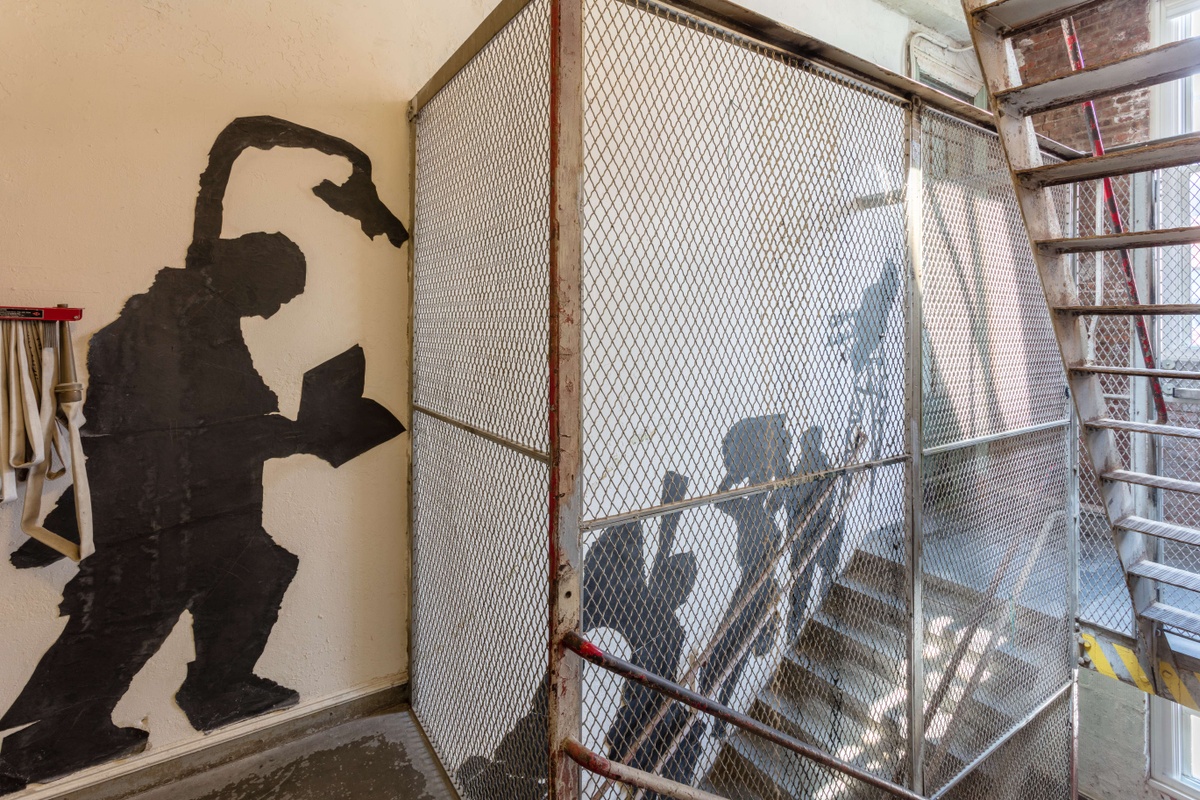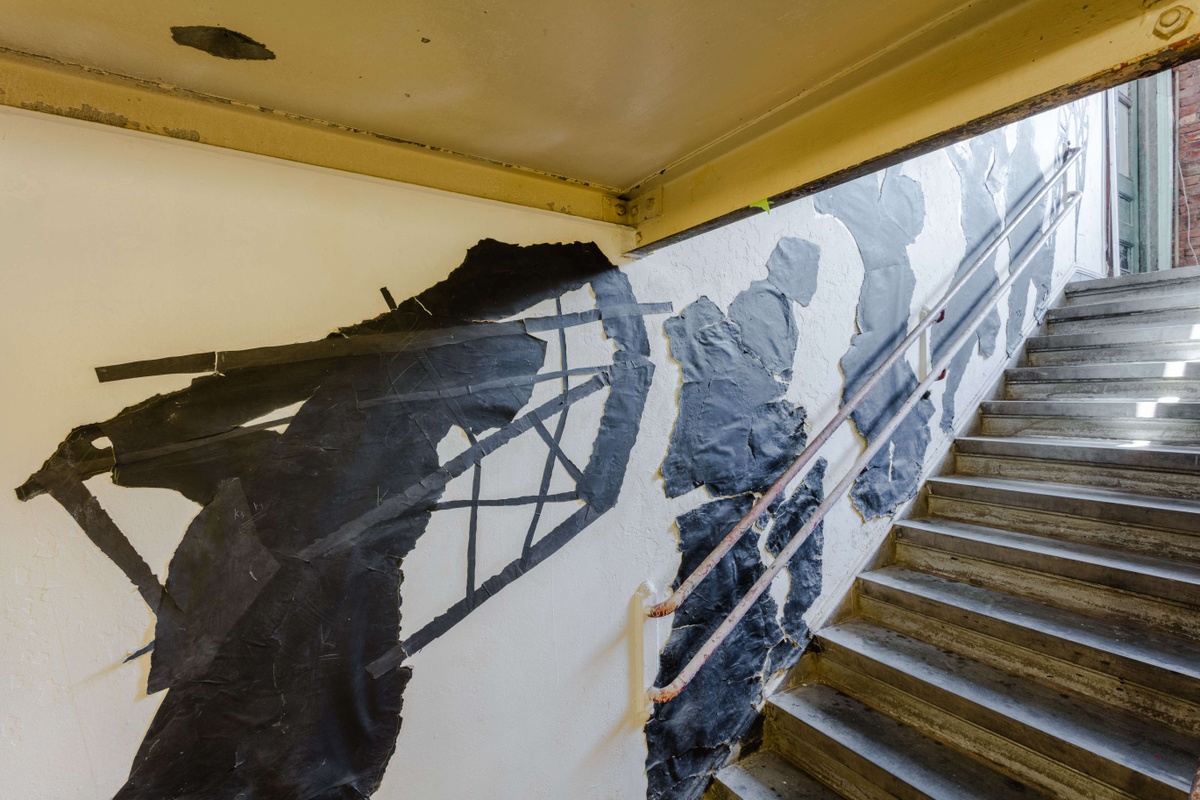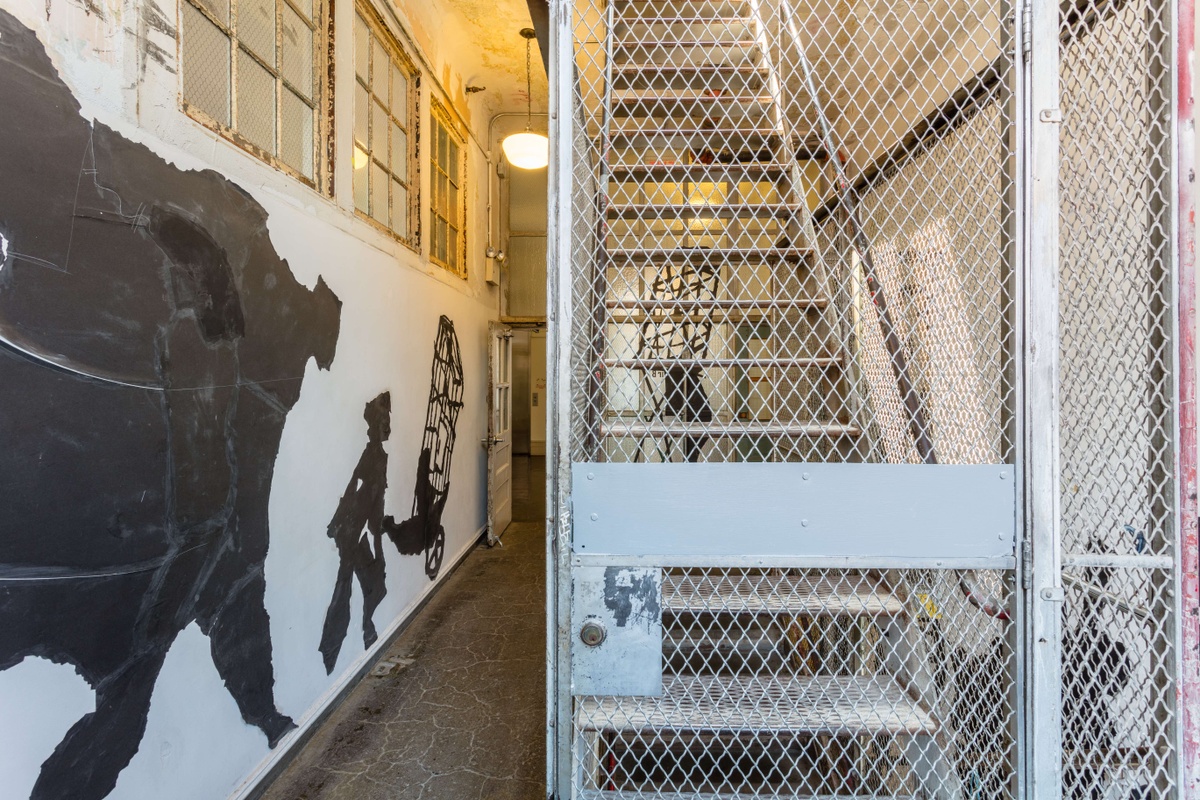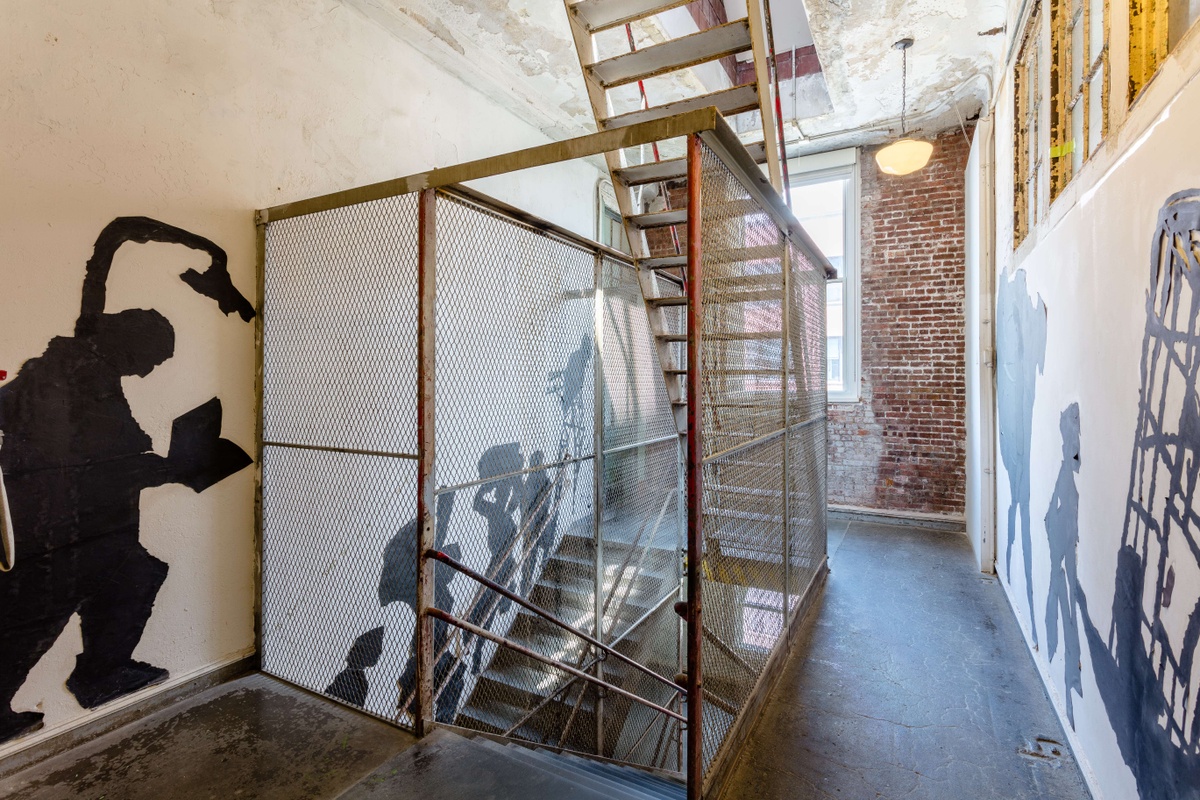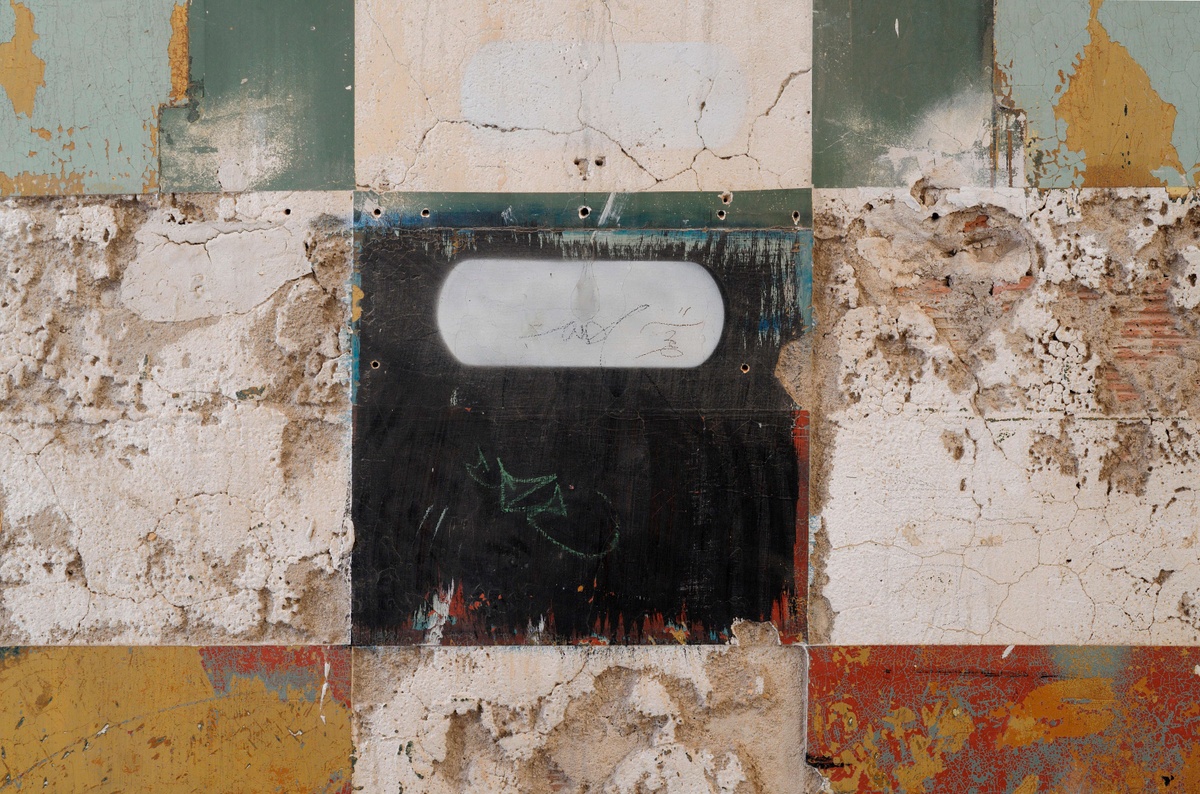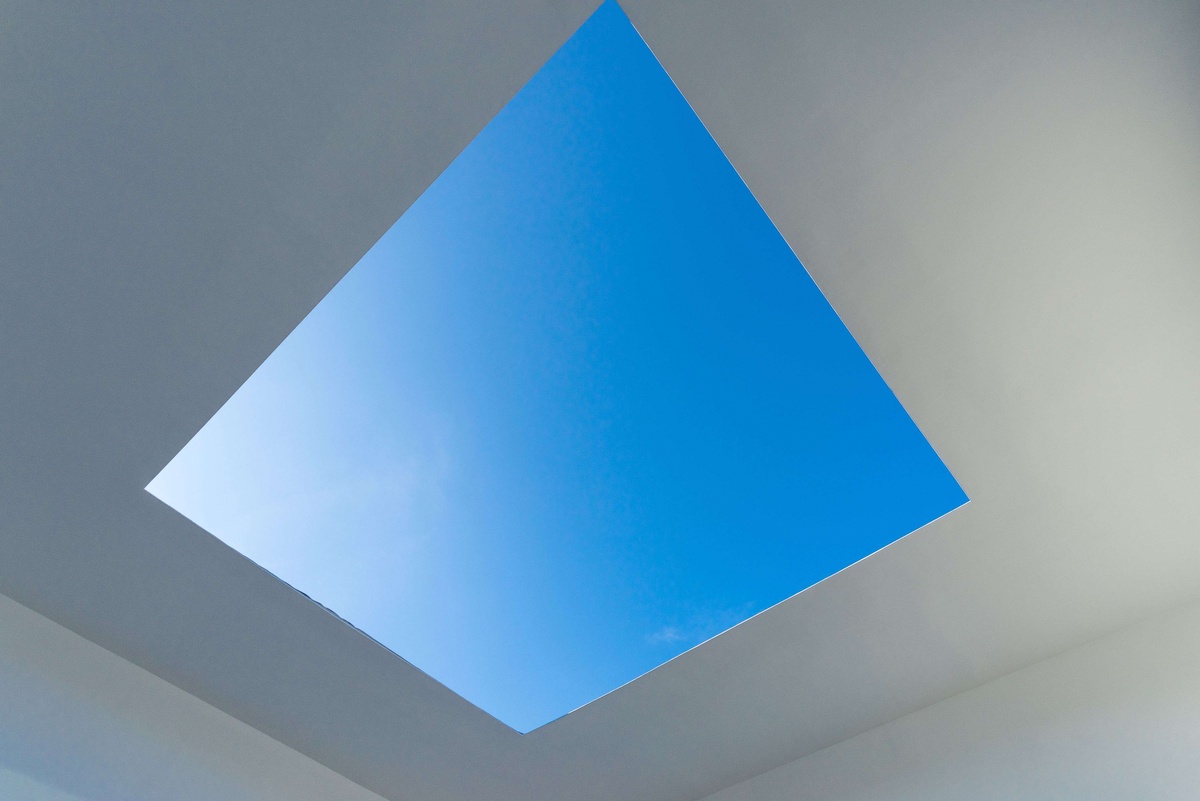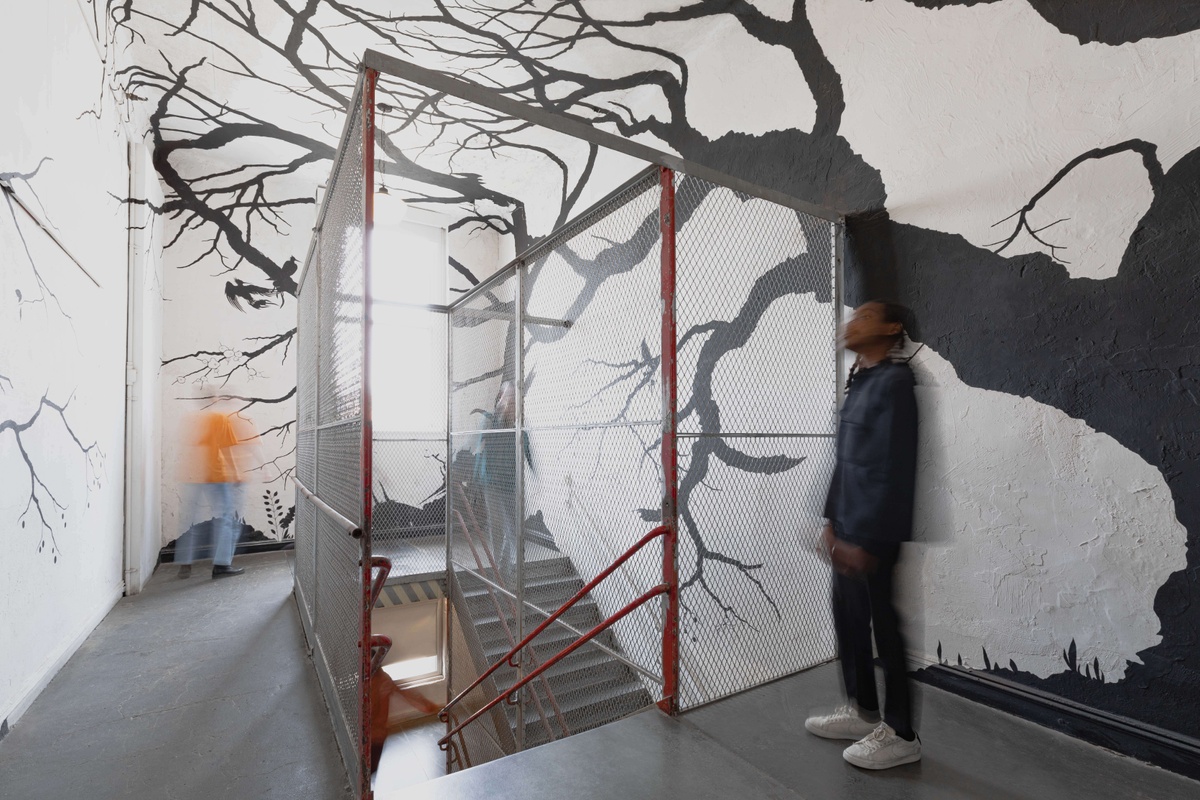Emily:
Hello, give me one second.
Bobby:
How do you think the sound is in here?
Emily:
Now we’re standing on the third floor after exploring the William Kentridge piece. It’s called Stair Procession and it’s been here since 2000.
Bobby:
Once you’re in this space, you have this large window that illuminates the walls and the walls are white. And then there’s these black anamorphic figures. If you look closely, you can tell that it’s made of construction paper, which again is a nod to this being a school.
Emily:
William Kentridge grew up in South Africa, during the time of the apartheid. And his parents were lawyers that were working to help people and be able to free them from the horrors that were happening at that time. So that kind of really heavily influenced him and his artwork.
Bobby:
There’s a theme of overlapping lines that kind of look like a cage. So this gate right here, which is normally used to divide the up and down, this fence, you kind of like looking at someone with a barrier between you.
Emily:
Really no matter what angle you look at the piece, you’re looking at some characters through this caging of the staircase and it makes you see the dehumanization of these people during the apartheid and during this procession and movement.
Bobby:
Also, back in the day, I know it was back in school when I was a public schooler, it was divided by boys and girls. So boys had one staircase and girls had another staircase. What I really appreciate about the artist’s interventions is that it really incorporate the space more than you think. It’s not just artwork that’s in a staircase, it’s artwork that’s in a staircase because it helps exemplify this feeling of segregation.
